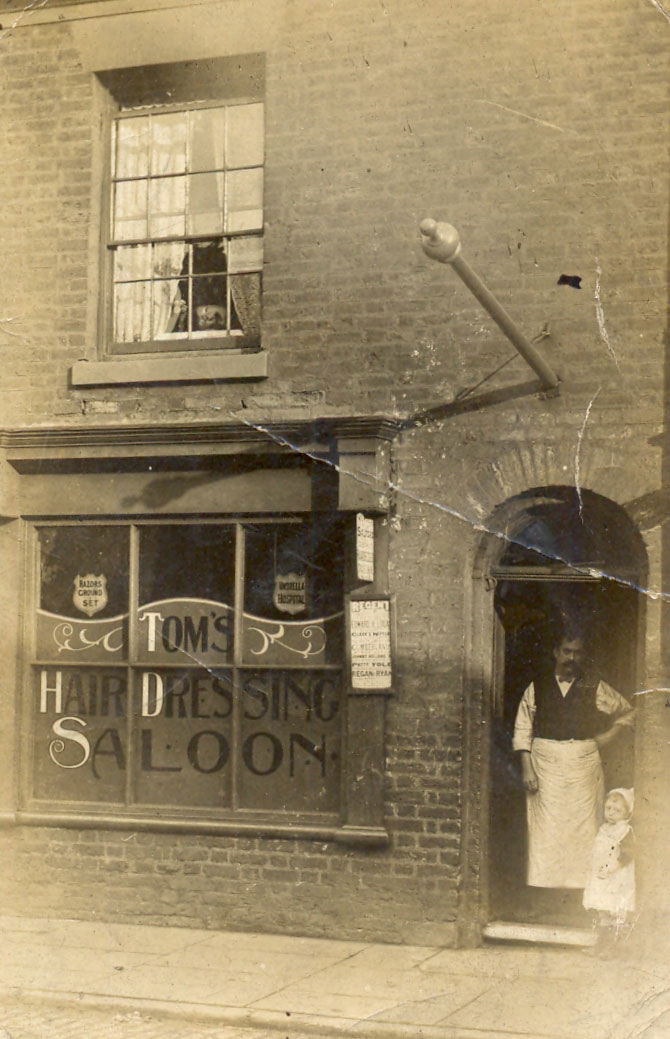Walter Greenwood Collection
Walter Greenwood (1903–1974), was a novelist and playwright born in Salford in 1903 and began writing fiction in his late 20s.
Greenwood's first and best-known work, Love on the Dole, published in 1933, was a story about urban poverty based on the area ‘Hanky Park’ where Walter grew up. The novel was an immediate success and over the next forty years, Greenwood produced nine more novels, together with short stories, plays, film scripts, and occasional journalism.
Greenwood's father, Thomas, died from alcoholism when Walter was nine years old, and at age of 13 he started worked in a succession of poorly paid jobs, as a pawnbroker's assistant, clerk, stable lad, maker of packing-cases, and was sometimes unemployed. After his success with Love on the Dole, Greenwood had a secondary career in writing film, and later, television scripts, including the BBC serial, The Secret Kingdom, in 1960. He was a member of Salford City Council in 1935-36, and in 1938 established Greenpark Productions Ltd film company and was involved in producing films for the Government during the Second World War. Greenwood was awarded an honorary D.Litt. by the University of Salford in 1971, and died in Douglas, Isle of Man on 11th September 1974.
They call this part 'Hanky Park' - first page of the manuscript of Love on the Dole.
Illustrations by Arthur Wragg in 'The Cleft Stick'.
'Standing Room Only' - extract from the proof copy with annotations.
This curated collection showcases:
- unpublished manuscripts of novels
- plays and film scripts
- published first editions
- photographs digitised from the physical Walter Greenwood Collection.
The physical collection is held by the Library's Archives and Special Collection, and was acquired directly from the author in the 1970s.
Highlights of the digital collection include the handwritten final version of Love on the Dole, and a draft film script with annotations of the same novel. Love on the Dole was also redrafted for the stage by Greenwood, in collaboration with Ronald Gow, in 1934. A copy of the first published addition is included in this collection. There are examples of some of Greenwood’s other works including:
- an unrevised film treatment of The Secret Kingdom
- an outline of Saturday Night at the Crown
- a script of So Brief the Spring
- a first draft of his autobiography There Was a Time.
The digital collection includes several photographs of Greenwood at various stages of his career, his parents, grandparents and sister Bessie and the area of Hanky Park where the family lived, and Walter grew up. The area was demolished in the 1960s as part of a ‘slum clearance’ programme and urban redevelopment scheme.
Not included in the digital collection is a series of correspondence from the 1930s to the 1970s mainly relating Greenwood’s work and a substantial body of press cuttings and reviews, interviews, and articles by or about Greenwood. This can be viewed in person at the University of Salford. For more details about this material visit the catalogue and visit the contact us page to arrange a visit.
How can it be used?
The manuscripts demonstrate how a writer may have developed novels, scripts and ideas. There is a strong connection with Salford and the photographs can be used as a visual source for the local Salford area in the first and middle part of the 20th century. The Cleft Stick is an interesting example of a collaboration between a working-class writer (Greenwood) and artist (Wragg).
Who might be interested?
Students and researchers in English Literature & Language, Performance, Art & Design, History & Politics. Anyone interested in regional literature, mid-20th century film and television, and history of Salford.
Types of material
Handwritten and typescript manuscripts; photographic images; published volumes.
Related material
Digital Collections:
- Stanley Houghton Collection
- Harold Brighouse Collection
- Arthur Hopcraft Papers
- Walter Greenwood: Not Just Love on the Dole
Copyright information
This collection is made available under an Orphan Works License, and with permission from the estates of Arthur Wragg and Ronald Gow.

